PreDesigner is a subscription web-based Application that allows you to get Architectural Site Analysis data. It has 3D visualizations to allow for better Architectural understanding of the site. It can be accessed by any browser on a laptop or tablet device, on the world wide web.
We have had “Computer aided Design” for a while, but it’s time for “Internet Aided Design” to take hold
Architectural Design is a tough job, and making it a little easier in any way is a welcome change. We live in a world of the interconnected web, with data being the driving force. We use data all the time in design, from the orientations to the locations, from the neighbors to the climate.
Our webtools are a one-stop-shop for these resources in a convenient, easy to use interface, with graphical, easy to understand, visualizations.
What can you do with Predesigner?
Well, we’re glad you asked.
Draw the Architectural Site you wish to Analyze on Predesigner
You can Mark and Edit the boundaries and get the Area and Boundary length, of the Architectural site you want to analyze. You draw directly on a Satellite Image, or on a Stylized Map. Site can be as small as you want, up to as large as a 1000 Acres!
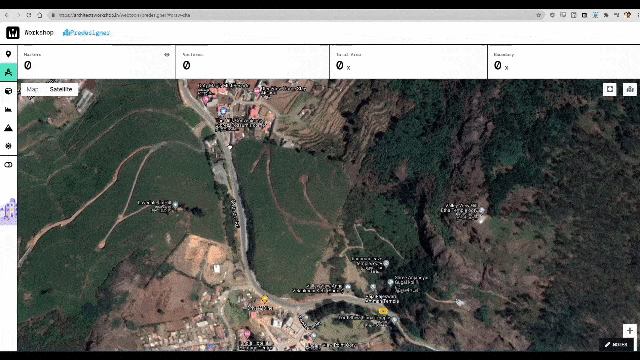
Mark Important Points
You can use Unlimited Markers of different types, Mark all the Points of Interest, or roads and paths as a series of markers to understand the terrain and placement. You can also switch markers on and off in layers, by type, to declutter the Map.
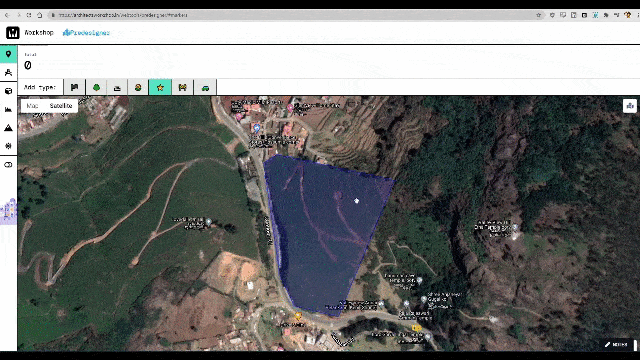
3D Visualization of the Architectural Site Analysis on Predesigner
View your Terrain, the boundary and Points of Interest marked in 3D on Predesigner! As soon as you’ve drawn your site. Fly around your site and view it from any angle to get your perfect perspective (at 60 fps!)
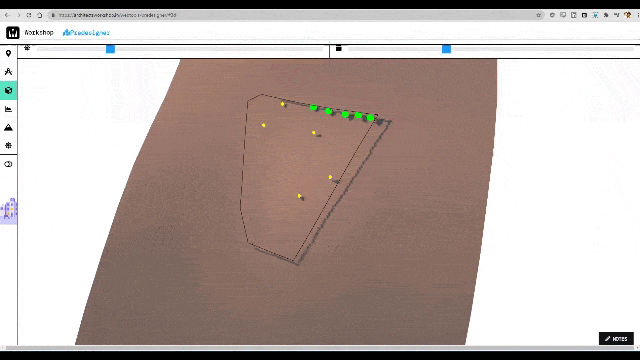
Site Sections through the terrain
Make Site Sections of your site in two directions, just by using the sliders, on PreDesigner, for easy Architectural Site Analysis. Easy as pie. You can get all the parallel sections of the site, showing the slopes and angles clearly.
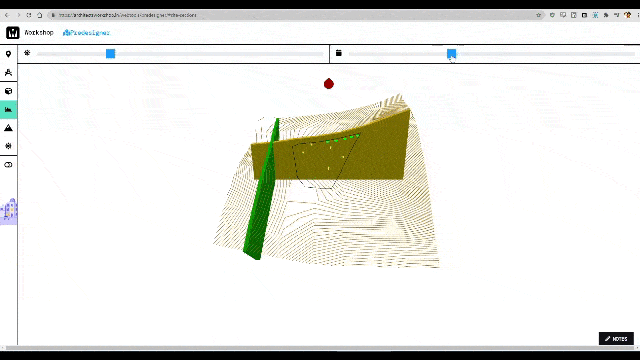
Contours of the full site and surroundings.
Get the contour drawing of your site immediately on drawing it, for any site on earth. Look at the Contour model in 3D to get a better understanding of your site.
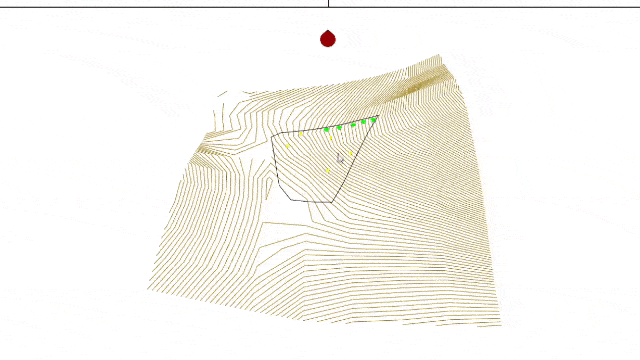
Sun Path – Architectural Site Analysis
You can use the sliders to vary the accurate Sun position (and shadows) by Date and Time, for any time you want to see, in 3D. Get the Sun Path of your site Immediately, as soon as it’s drawn. The exact angles are calculated and marked every six minutes for the entire day, for the full year

Multiple Architectural Sites for Analysis on Predesigner
You can create more then one site, for Architectural Site Analysis on Predesigner! This allows you to compare different locations, or just work on more than one project at a time, as all of us do. (All stored in your browser). You can fully Manage your collection of sites by naming, copying, editing or deleting old sites. It even has a recycle bin.
Auto Save
All your work is autosaved at every keystroke and click, even if you close the browser. Once you reopen the browser, you can go back to the site, and find all your previous work right as you left them. (This is all stored in your browser.)
Our Story
We are all Architects and Designers on this team. Most of us practice through either firms of our own, or other offices. and most of us also teach in some capacity at various colleges. We have designed this for our full community, with both practice and academia in mind.
We’ve struggled ourselves to pitch for projects and understand sites initially before we visit them. As students and teachers we have also struggled with the infamous “Site Analysis Sheet”.
As students
..from before the internet really allowed Satellite images, we had more hypothetical sites, and made up terrain than real world examples. This was purely because of the difficulty in getting the information necessary.
Although the internet has grown since then, it still takes too long, and involves a lot of searching and indexing (and merging of images), before any of it can be used. This information is often piecemeal and has to be gathered from many different online source, assuming you even know they are available.
As faculty
..in design studios, we found that students would struggle to get the data, or it took too long to acquire it. And since the data took too long to acquire, there was little-to-no analysis of the data after. Just a collection of numbers on a sheet.
Very few of the designs really used, or learnt anything from the site itself, except for the generic information. The act of gathering the information to condense on to a sheet or presentation was in itself so tedious, that no further work could be done analyzing it in the time allotted before we’ve had to move on.
As architects
..we tend to ignore the analysis of the site altogether as something that happened only in college. The only analysis we do, ends up being the size and road approach, and just like we did in college, it’s easy to assume away terrain and flatten it than to work it into the design itself.
A lot of this has to do with the speed at which we need to pitch projects, or even entirely design them. We don’t have immediate access to the relevant information, except for a quick glance at the property document before we have to start sketching ideas out.
We designed this with both Practice and Academia in mind, we present this tool as a possible solution to these issues as we have as a community.
For Academia:
Our college design projects are invariably filled with hypothetical sites, and a lot of them. We can now very easily choose sites, so even our hypothetical projects are based in reality. It takes minutes to draw up a site, look at the terrain and other features and edit the shape and location to what you need.
You can get all the necessary information, aka “Site Data”, immediately. You can then spend the time analyzing the site, rather than collecting numbers.
For Practice:
Although we all agree on the importance of a site in our designs, the Initial pitch for any project is generally a very quick collection of ideas. After a glance at a property document for the shape of the site and approximate location, we move on.
We do this because any analysis of the site and gathering of the data takes too long, whether it is the days and weeks before you get a survey drawing, or crawling on the web to get relevant data about the site.
This tool allows you to get information about the site quickly and in a graphical 3D format that makes it easy to use them in presentations and pitches. It cuts the initial wait from weeks to nothing. The days spent on gathering the data and images to mere minutes. This allows us to be a lot more thoughtful even in our initial ideas. It helps kick start a project immediately without having to wait.
